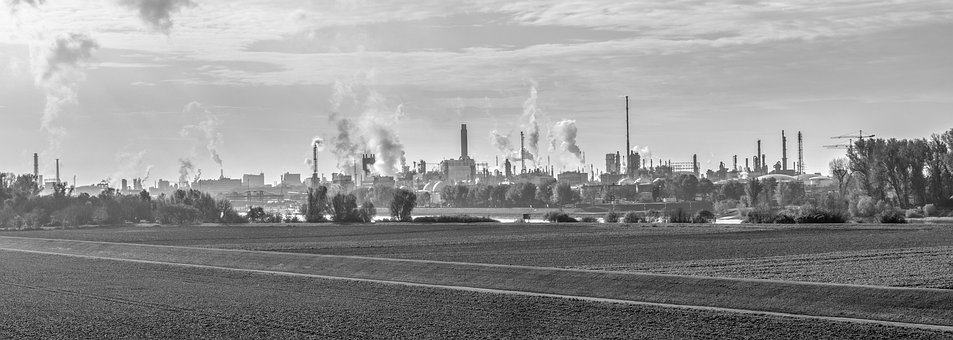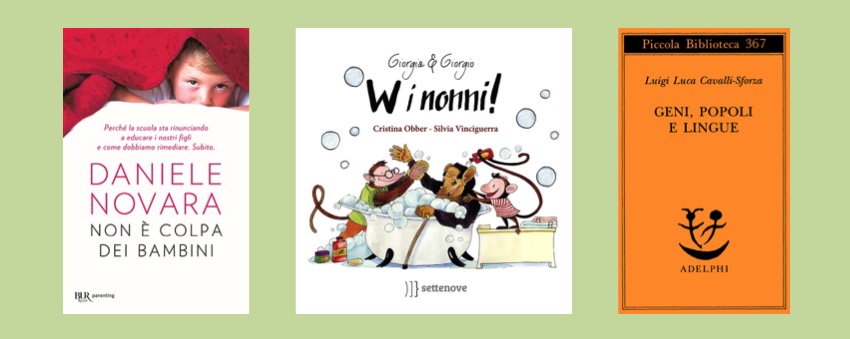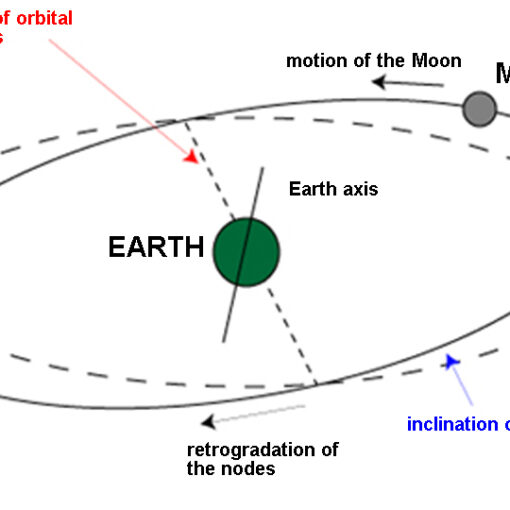or how to organize yourself to live still under the sun
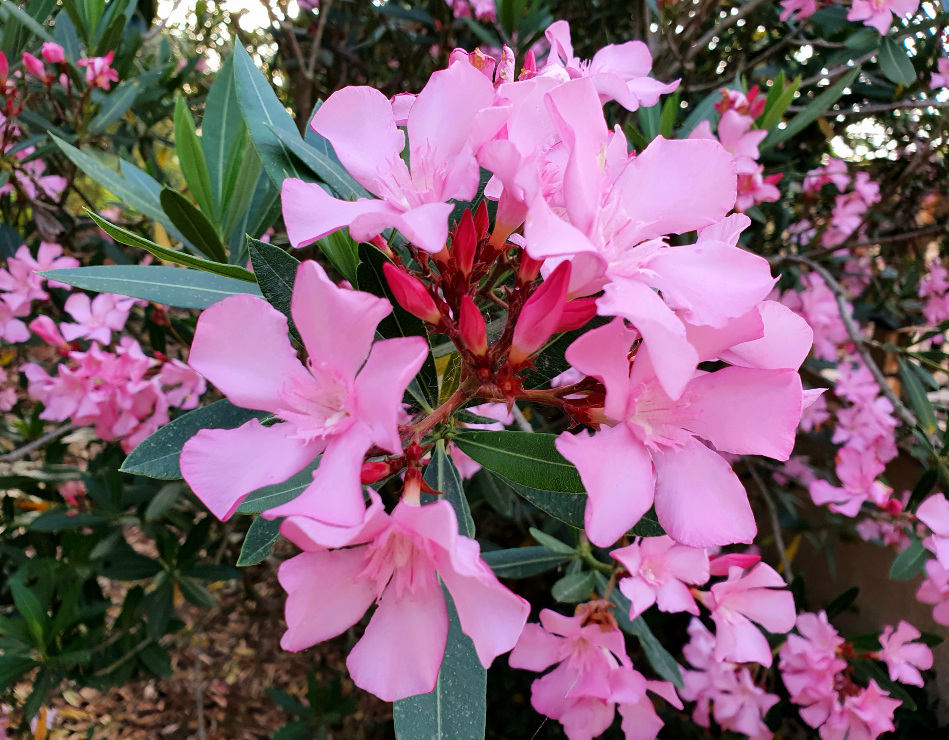
The vegetation of the Mediterranean region, dominated by evergreen trees, shrubs, and bushes that can withstand the long and hot summers without rain, is absolutely different from that of any other European, African or Asian region of which it is also a part. In fact, it is singular how the very different nature of the three continents meets and homogenizes on the extreme edges of each of them: southern Europe, northern Africa, western Asia. Even the cultures of the peoples who have always inhabited the three continents met and mixed in this basin, not only because the boats allowed commercial and cultural exchanges, but because the identical vegetation and the same cultivation possibilities were at the center of converging forms of cultural evolution.
Geological changes, climatic gradients, extreme variety and habitat fragmentation, have led to an extraordinary richness of species and endemics in the Mediterranean vegetation, higher than that of any other area of equal latitude and width: there are 171 families, with 1,649 genera and over 20,000 species, 38% of which are endemic!
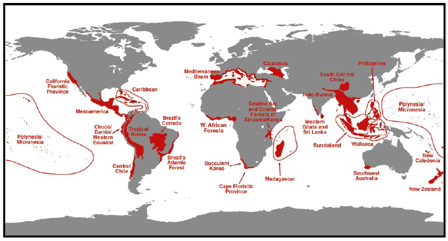
(Myers et al., 2000)
The adaptations
The flora, and consequently the fauna, which colonized the territory that frames the Mediterranean, had to face a very particular situation. But if animals can seek refuge in moments when the sun darts mercilessly, for the plants, anchored to the ground, the challenge was to take advantage of so much light without getting hurt!
Rainfall concentrated only in a few months, therefore long drought periods and long annual photoperiod, make the Mediterranean climate considered as subtropical and, in fact, the typical Mediterranean vegetation is a Sclerophyllous Subtropical Forest.
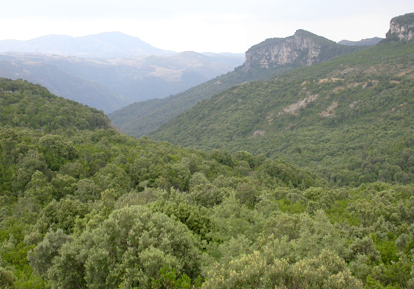
To begin a reflection on the adaptations that plants have had to adopt, let’s focus on the word sclerophyllia: it comes from the Greek scleròs, hard and phyllon, leaf, and is the most important adaptation that most Mediterranean plants have had to adopt in this climate. It consists of the presence of small, leathery leaves, equipped with particular structures useful for limiting transpiration and therefore water loss. It is an adaptation that has become indispensable especially for the species most exposed to the sun, wind and brackish, both for their development in height and for their location on rocky slopes or coastal sands. The fact that many species belonging to different families have adopted this stratagem, highlights an adaptive convergence that explains the “similarity” between the leaves of phylogenetically distant plants such as the Mastic (Pistacia lentiscus), the Olivastro (Olea europaea), the Carob (Ceratonia siliqua), Holm oak (Quercus ilex), to mention just a few.
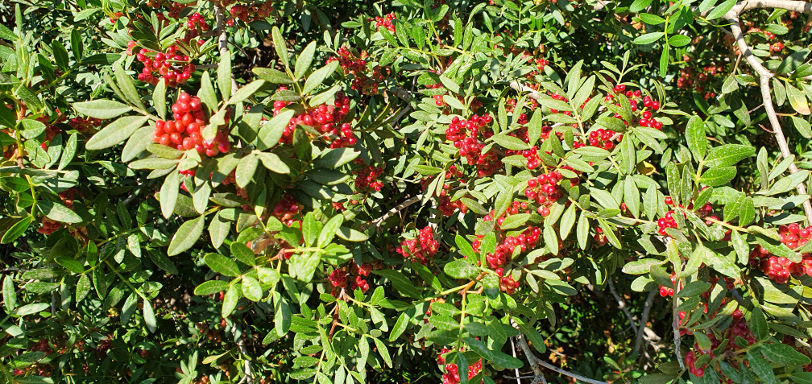
Reducing the size of the leaf blade is a strategy adopted both by plants that have to limit water losses such as junipers (Juniperus sp.), Rushes (Juncus sp.) Or broom (Spartium junceum), but also by plants like conifers which, colonizing the mountain plateaus, must avoid freezing. Thus the needle-like leaf common to all pines is useful to them both on the coasts (maritime, domestic, Aleppo pine) and in the mountain areas (black pine, mountain pine).
Then there are plants such as Holm oak and Olive which have added other adaptive strategies to sclerophyllia. Observing their leaf we notice that the upper page is shiny and the lower one “tomentosa”, that is, it has a very thick and short hair. The shine reflects part of the sun’s rays, the tomentum further prevents transpiration. In many cases, as in the case of the Santolina of the beaches (Achillea marittima), the tomentum is present on the whole plant, just like in the Edelweiss (Leontopodium alpinum): both these plants protect their water reserves from atmospheric agents. In the Santolina to preserve them, in the Edelweiss so they don’t freeze. Opposite climatic stresses led to an identical adaptation.
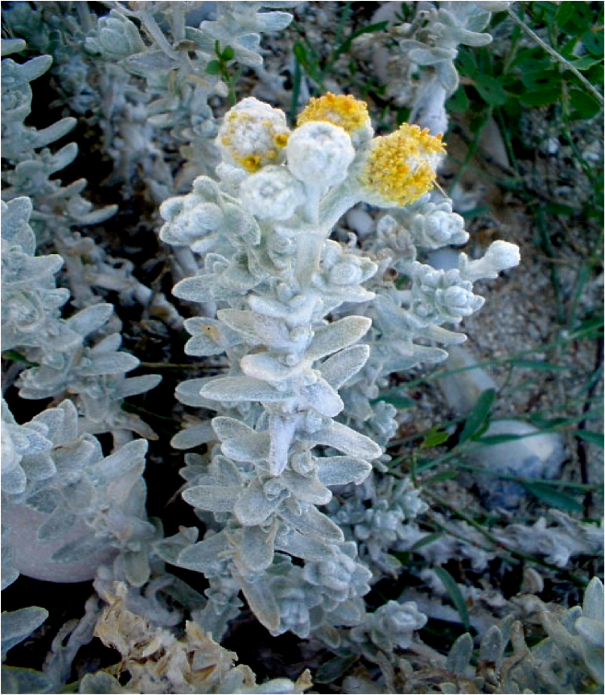
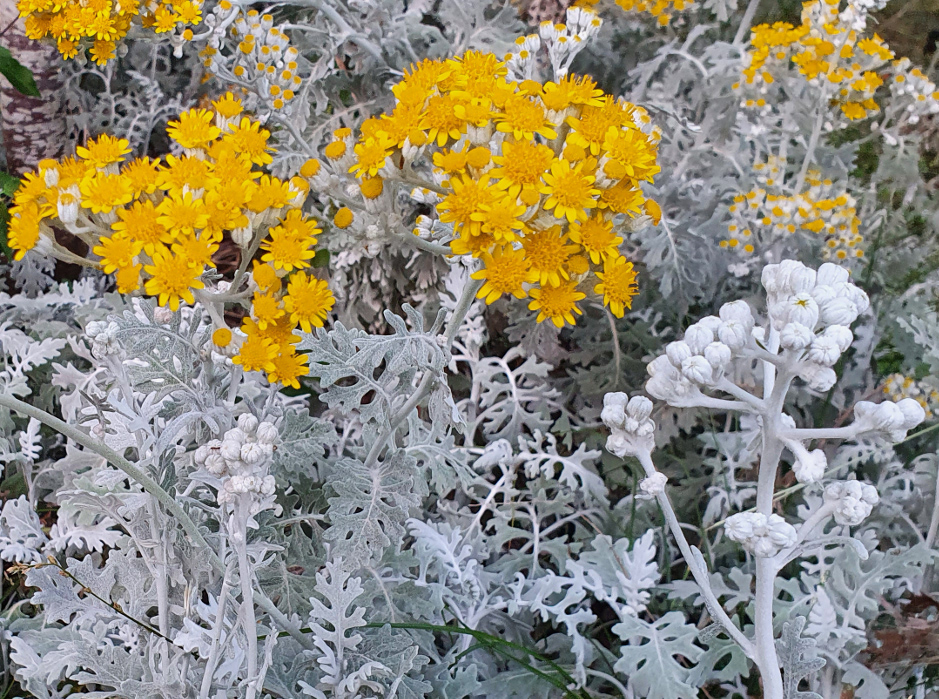
Where the scarcity of water is particularly strong, such as on beaches or on rocks (which are places similar to deserts), plants adopt two types of strategies, the same ones adopted by desert plants: they transform their leaves into thorns and store large quantities of water in the stem or leaves, making them succulent. In other words, they transform their cells into authentic water deposits, which they then defend against perspiration by means of a drastic decrease in stomata (plant equivalents of the pores of our skin).
To reduce water loss and as a deterrent against grazing, many species release aromatic essential oils. In the epithelia of young stems or leaves there are specialized cells and secretory tissues that secrete these substances with a penetrating odor. Thermal shocks, bumps or rubbing determine the breakage of the cuticular layer and cause the release of extremely volatile essential oils.
There is also a very common characteristic in Mediterranean plant species; it is heterophylly, that is, the ability to develop leaves of different shapes and sizes even on the same branch. Examples of the presence of leaves of different shapes in the same plant, depending on the height from the ground at which they are located, are the Ivy (Hedera helix) and the Holm oak. In the first case there is diversity of form, in the second of size. If you observe the shape of the ivy leaves placed on the branches that run on the ground, you will notice the classic star shape, which is lost in favor of a more rounded one, as the plant, climbing, reaches the “positions” higher and more lighted.
In the case of the Holm oak, the lower leaves and less exposed to direct light (the holm oak scrub is very dense), have a leaf that is even four times larger than that of the leaves of the highest branches. Furthermore, the leaves placed closer to the ground also have a characteristic “thorniness” of the edge, which is completely lost on the higher leaves, that is, where herbivores do not reach!
Even the root systems, in particularly drought areas, have a series of adaptations that increase their ability to absorb water; thus the root system of the Ammophila (Ammophila arenaria), a pioneer plant of sandy coasts, forms a very extensive network, which allows it to collect the rain that filters rapidly through the sand. Many other plants, such as carrots (Daucus sp. and Echinophora sp.) Instead use the roots as a nutrient reserve.
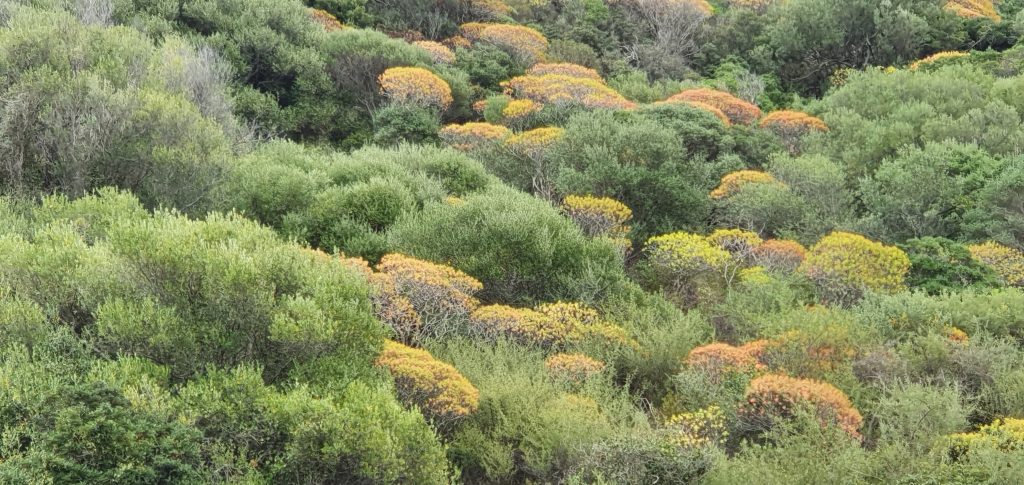
Plants such as Euphorbia arborea (Euphorbia dendroides), which form pure or mixed populations in the hottest horizon of the bush, on coastal rocks exposed to sea winds and intense sunshine, have found it convenient to reverse the resting and vegetative periods. After spring flowering, the Euphorbia loses its leaves and goes into quiescence; only in autumn, while the inland trees, which have to worry about frost, lose their leaves, taking advantage of the autumn rains, it becomes green!
We close this partial review, recalling a feature that unites all species, both arboreal and shrubby ones: the plants develop by extending the low branches to the ground, closing like curls, forming like cushions (pulvini). The purpose is twofold: to expose as large a leaf system as possible to light and shade the soil on which they grow so that the soil remains moist for as long as possible.
Author: Anna Lacci is a scientific popularizer and expert in environmental education and sustainability and in territory teaching. She is the author of documentaries and naturalistic books, notebooks and interdisciplinary teaching aids and multimedia information materials.
Translation by Maria Antonietta Sessa


